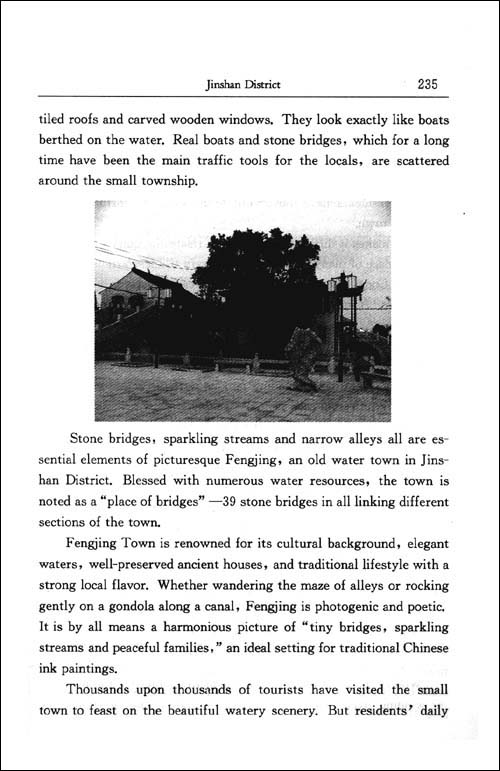Sample Pages Preview

Shanghai is developing so rapidly that its urban map has to beupgraded
every six months. One obvious phenomenon is that thegreen belts are
getting increasingly larger. At the end of 2002, per-capita green areas
reached seven square meters and the coverage rateamounted to 27 percent.
Per-capita landscaped areas in Shanghai havegrown from newspaper-size
to room-size, leading every large and me-dium-sized city in China. In
early years of the 21st century, Shanghaiwon a "City Sustainable
Development Contribution" award from theUnited Nations. Like other
international metropolises, Shanghai isdensely populated, but has found
ways to develop green areas. Exist-ing green areas are fully utilized.
Intimidating brick walls enclosingsome public institutions have been
demolished or replaced with rail-ings, to share the greenery within. As
well, to their merit, nearly allthe Shanghai parks are free of charge to
visitors. The city has takenon a new look.
Like many great cities,
Shanghai has its own mother river ——the Huangpu, which has always
nourished the people on its two banks. The Huangpu River, totaling 114
kilometers long, rises in the Taihu Lake, Jiangsu/Province and flows
through the urban area of Shang- hai, and then empties into the mouth of
the Yangtze River at the northeast Shanghai. Touring the river in a
pleasure boat, you can en- joy the picturesque scenery along both the
riversides, as you are transported between the city's past, present and
future.
